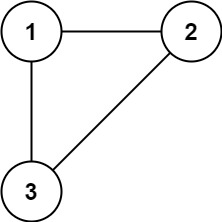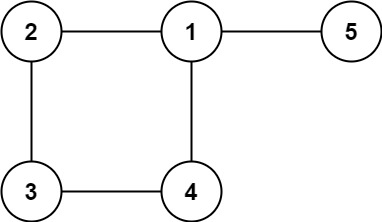Leetcode#684. Redundant Connection
Problem
In this problem, a tree is an undirected graph that is connected and has no cycles.
You are given a graph that started as a tree with n nodes labeled from 1 to n, with one additional edge added. The added edge has two different vertices chosen from 1 to n, and was not an edge that already existed. The graph is represented as an array edges of length n where edges[i] = [ai, bi] indicates that there is an edge between nodes ai and bi in the graph.
Return an edge that can be removed so that the resulting graph is a tree of n nodes. If there are multiple answers, return the answer that occurs last in the input.
Example 1:

!https://assets.leetcode.com/uploads/2021/05/02/reduntant1-1-graph.jpg
1 | Input: edges = [[1,2],[1,3],[2,3]] |
Example 2:

!https://assets.leetcode.com/uploads/2021/05/02/reduntant1-2-graph.jpg
1 | Input: edges = [[1,2],[2,3],[3,4],[1,4],[1,5]] |
Constraints:
n == edges.length3 <= n <= 1000edges[i].length == 21 <= ai < bi <= edges.lengthai != bi- There are no repeated edges.
- The given graph is connected.
Solve
1 | class Solution: |
